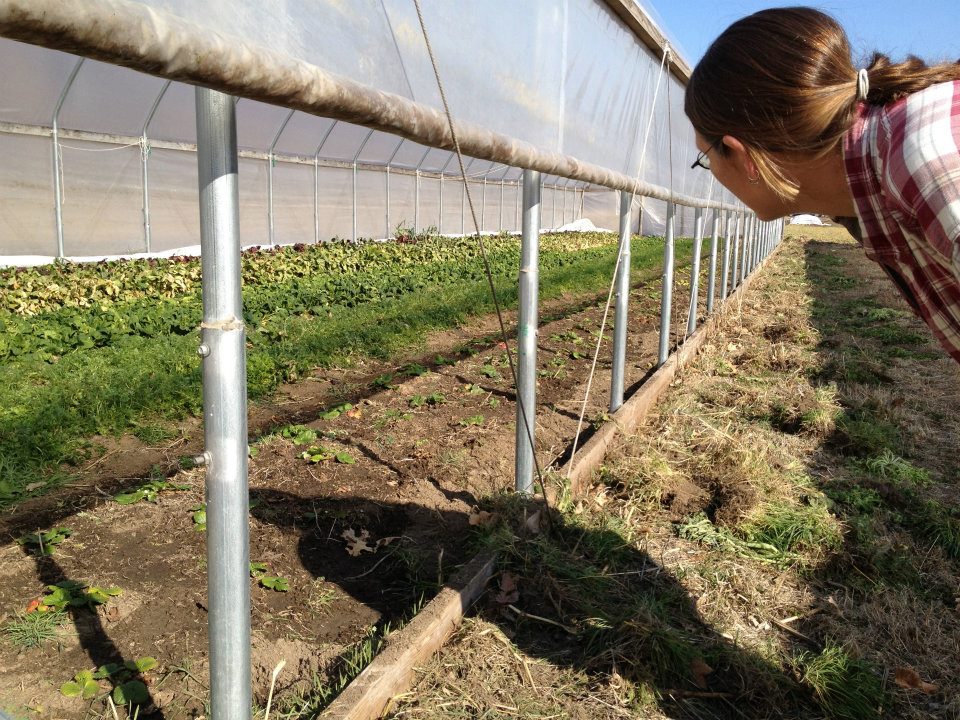An extraordinary 2017, thanks to you!

By Lea Madry, Development Director
It’s hard to believe that the final weeks of 2017 are upon us, and at the National Farm to School Network, we are reflecting on an extraordinary year for farm to school. For that, we have you – our members, donors, partners and friends – to thank. Your commitment to our shared mission and partnership in advancing the farm to school movement has helped support many more healthy kids, thriving farmers, and vibrant communities across all parts of the country. Together, we’re keeping the farm to school movement growing strong!
Here are several highlights of our 2017 success that you helped make possible:
200 New State & Territory Partners: Embarked on an exciting new chapter of our work with the selection of nearly 200 partner organizations across all 50 states, Washington, D.C. and, for the first time, U.S. Territories, to serve as our 2017-2019 Core and Supporting Partners.
New Strategy: Launched and began implementing our ambitious 2017-2019 Strategic Plan, which includes expanding and refining our policy advocacy, programs and partnerships to institutionalize farm to school and early care and education.
National Advocacy: Worked with bipartisan champions in Congress to introduce the Farm to School Act of 2017, which proposes an increase in funding from $5 million to $15 million for the highly successful USDA Farm to School Grant Program. The Farm to School Act of 2017 would also ensure that the grant program fully includes early care and education sites, summer food service sites, after school programs, and tribal schools and producers, while improving program participation from beginning, veteran and socially disadvantaged farmers and ranchers.
Support for Native Communities: Launched Seed Change initiatives in five Native communities as a strategy to leverage community-wide initiatives towards building food sovereignty and revitalizing use of traditional foods. Activities have focused on procurement of local and traditional foods, school gardens, and food and agriculture education in Native schools.
Expanding Farm to Early Care and Education: Enriched existing networking and collaboration opportunities among ECE stakeholders through a national listserv and quarterly webinars. We also launched a Roadmap for Farm to Early Care and Education resource and Growing Head Start Success with Farm to Early Care and Education tool, which promotes understanding of how farm to ECE can support achievement of Head Start Program Performance Standards.
Innovation Awards: Presented Innovation Awards to celebrate beginning farmers in their first 10 years of farming and farmer veterans. This year’s awards have been given to two farmers in recognition of their exemplary efforts in selling local produce to schools and engaging kids in learning where their food comes from: Dylan Strike from Strike Farms in Bozeman, Montana and Jon Turner from Wild Roots Farm Vermont in Bristol, Vermont.
National Partnerships: Facilitated expanded engagement in farm to school with a new initiative to designate a “National Partner of the Year.” In this inaugural year, we partnered with the School Nutrition Association to better connect our members and school nutrition professionals for fostering a nation of healthy, well-nourished kids.
New Resources: Expanded our resource library with new resources for helping farm to school efforts grow in all communities, including a study of the economic impact of farm to school, an updated version of our State Farm to School Legislative Survey, and new non-English and bilingual farm to school resources.
Your donations have made this work possible, and they’re crucial to helping us do more in 2018. Make your end of year, tax-deductible donation today to keep this movement growing.
We’re on track to build on 2017 successes by expanding the farm to school movement in 2018, as part of our new strategic plan. To support our ambitious growth goals, we’ve launched the Seed Change Venture Fund so that passionate individuals like you can invest in our movement. Will you make a donation during the final months of 2017 to help sustain our movement and propel our growth?
After all, farm to school doesn’t happen on its own – it takes people like you championing the movement. We need your help to continue this important work.
With your gift, you’ll be contributing to the Seed Change Venture Fund, which supports our bold growth goals for farm to school in 2018 and beyond.
By donating, you’re helping us build strong farm to school support networks, train farm to school practitioners across the country, drive policy change and develop vibrant communities that support healthy kids and thriving farms. Give today!
















